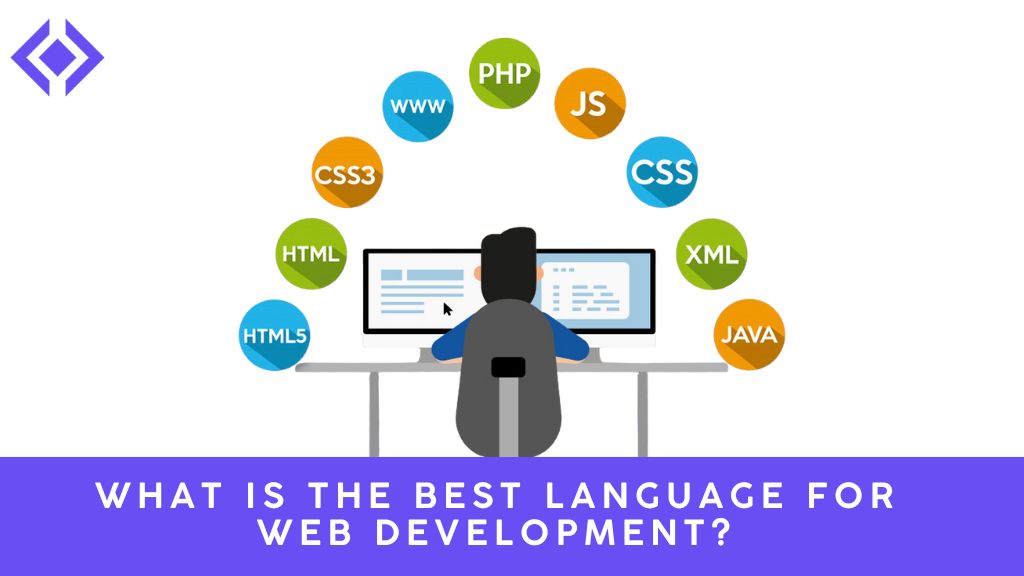Subtotal $0.00
Choosing the best language for web development can feel like a daunting task, especially with so many options available. Each language has unique strengths and is suited for specific tasks within the web development world. In this blog, we’ll break down the key programming languages for web development, their advantages, and practical tips for selecting the right one for your needs.
Understanding Web Development
Web development involves creating websites or web applications that run on internet browsers. It includes three primary components:
1. Front-End Development
This involves the visible part of a website that users interact with. Key technologies include:
- HTML: Structures web content.
- CSS: Adds styling and layout.
- JavaScript: Enables interactivity and dynamic features.
2. Back-End Development
This focuses on server-side logic and database management. Popular languages include:
- Python
- Java
- PHP
- Ruby
3. Full-Stack Development
A full-stack developer handles both front-end and back-end tasks, combining tools and languages from both realms.
Criteria for Choosing the Best Language
Before diving into specific languages, consider these factors:
1. Project Requirements
Different projects demand different capabilities. For example:
- Static Websites: HTML, CSS, and minimal JavaScript.
- Dynamic Web Apps: Requires server-side languages like Python or PHP.
- Scalable Applications: Java or Node.js may be a better fit.
2. Ease of Learning
If you’re a beginner, starting with a language like Python or JavaScript might be easier due to their simplicity and extensive community support.
3. Performance
Consider how critical performance is to your application. High-traffic platforms might require languages like Java or C# for optimal efficiency.
4. Community and Support
Languages with large, active communities like JavaScript and Python offer extensive resources, tutorials, and libraries to aid your development process.
Popular Languages for Web Development
1. JavaScript
Why It’s Great:
- JavaScript is essential for front-end development and increasingly popular for back-end tasks with Node.js.
- It powers interactive features, from animations to real-time updates.
- Frameworks like React, Angular, and Vue.js simplify development.
Use Cases:
- Dynamic websites
- Single-page applications (SPAs)
- Real-time chat applications
2. Python
Why It’s Great:
- Known for its simplicity and readability, Python is beginner-friendly.
- Frameworks like Django and Flask streamline back-end development.
- Excellent for integrating with data analysis and machine learning tools.
Use Cases:
- Content management systems (CMS)
- E-commerce platforms
- AI-powered web applications
3. PHP
Why It’s Great:
- PHP powers nearly 80% of the web, including platforms like WordPress.
- Highly compatible with databases like MySQL.
- Great for server-side scripting.
Use Cases:
- Blogs and forums
- Custom CMS development
- Small-to-medium-sized web applications
4. Ruby
Why It’s Great:
- The Ruby on Rails framework emphasizes convention over configuration, speeding up development.
- Known for clean and efficient code.
Use Cases:
- Social networking sites
- E-commerce applications
5. Java
Why It’s Great:
- A robust, platform-independent language.
- Frameworks like Spring enhance its utility for back-end development.
- Widely used in enterprise-level applications.
Use Cases:
- Large-scale enterprise systems
- Web portals
- Banking applications
6. C#
Why It’s Great:
- Developed by Microsoft, C# works seamlessly with the .NET framework.
- Ideal for building scalable and secure applications.
Use Cases:
- Enterprise software
- Gaming (using Unity)
- Web APIs
7. Go (Golang)
Why It’s Great:
- Known for its performance and scalability.
- Often used for building microservices and APIs.
Use Cases:
- Cloud-based applications
- High-performance web servers
8. TypeScript
Why It’s Great:
- A superset of JavaScript, offering static typing and improved error detection.
- Works seamlessly with modern JavaScript frameworks.
Use Cases:
- Large-scale front-end projects
- Collaborative development environments
How to Choose the Best Language for Your Needs
1. Beginner-Friendly Options
If you’re new to coding, start with JavaScript or Python. Both have simple syntax and extensive learning resources.
2. For Front-End Development
Stick with JavaScript and its frameworks. Add TypeScript for larger projects requiring better code management.
3. For Back-End Development
Consider Python, Java, or PHP based on your project’s scale and complexity.
4. For Full-Stack Development
Master JavaScript (with Node.js) or Python to handle both front-end and back-end tasks seamlessly.
5. Scalability and Performance
For high-performance applications, Go or Java are excellent choices.
Practical Applications of These Languages
- E-commerce Platforms: Combine Python (Django) with JavaScript (React).
- Social Media Sites: Use Ruby on Rails or PHP for rapid development.
- Enterprise Solutions: Leverage Java or C# for robust and scalable applications.
Conclusion: What Is the Best Language for Web Development?
There’s no one-size-fits-all answer to this question. The best language depends on your specific goals, project requirements, and personal preferences. Whether you’re drawn to JavaScript for its versatility or Python for its simplicity, the key is to start learning and building projects to gain experience.
Call-to-Action:
Ready to dive into web development? Choose a language that aligns with your goals, explore tutorials, and start building your first project today. Share your progress and challenges in the comments below—let’s learn together!

